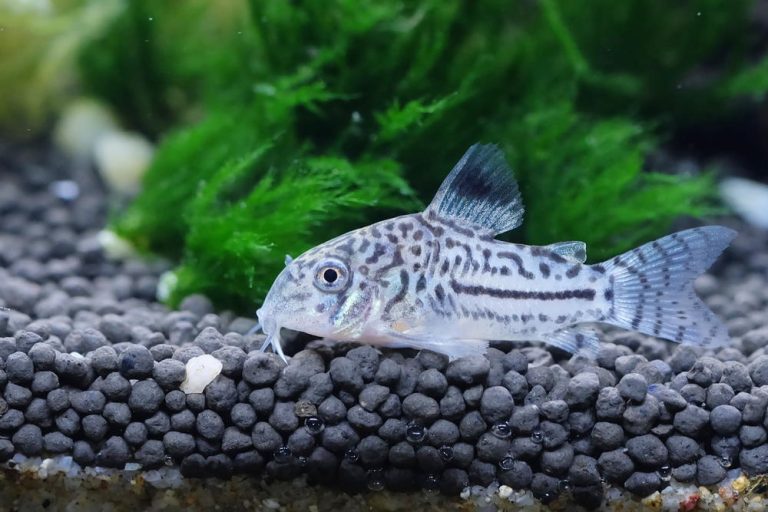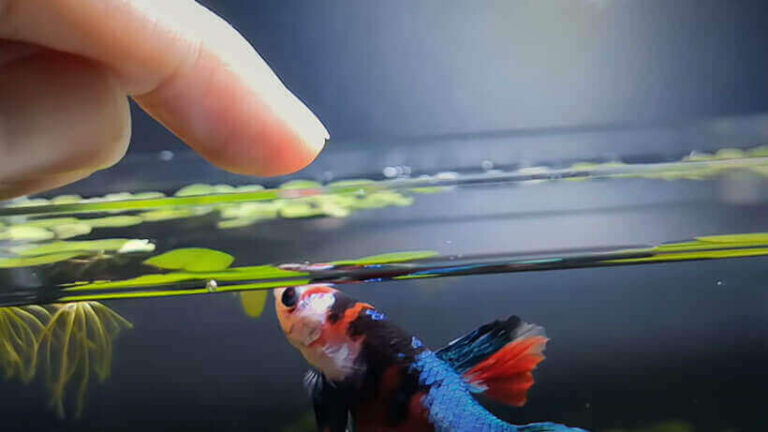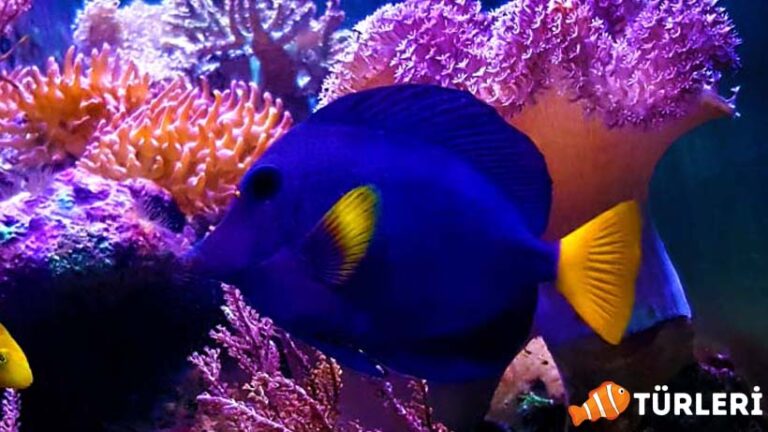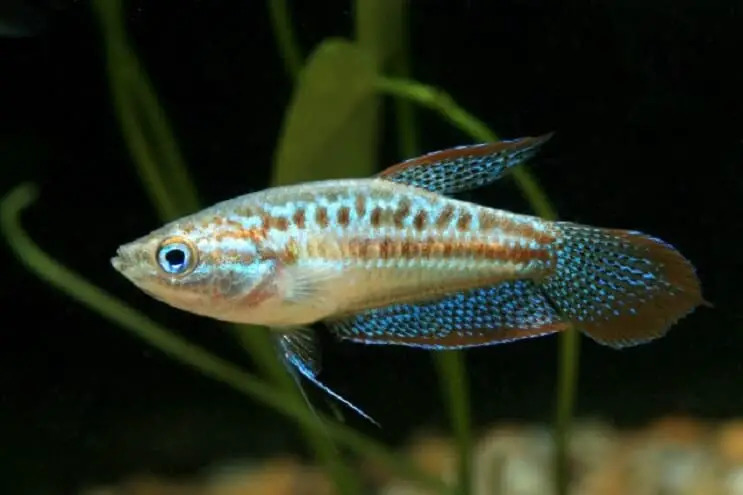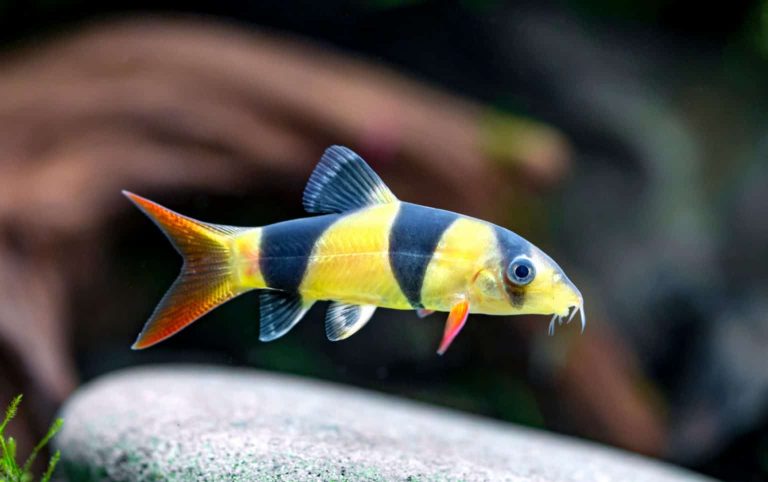Panda Cory Catfish Guide: Features, Care, and More 2023
The Panda Cory or panda catfish is a South American corydoras species that has black and off-white colors and patterns resembling a panda. Known for their peaceful demeanor, panda corys are both aesthetically pleasing and functionally beneficial for aquariums.
Summary of Panda Cory Catfish
| Scientific Name: | Corydoras panda |
| Origin: | South America |
| Diet: | Omnivore |
| Behavior: | Peaceful |
| Behavior towards its own species: | Peaceful |
| Swimming Zone: | Bottom |
| Water Temperature: | 22°C – 25 °C |
| Water Hardness: | 2 – 12°dH |
| pH Level: | 6.0 – 7.4 |
| Minimum Tank Size: | 50 Liters |
| Adult Size: | 5 cm |
| Reproduction: | Egg layers |
| Yaşam Süresi: | 10 yıl |
| Care Level: | Easy |
Features of Panda Cory Catfish
Popular in aquariums, the panda cory originates from rivers named “Ucayali” in Peru. Discovered by HR Richards in 1968, the naming of the panda fish was done three years later by individuals named Nijssen and Isbrücker.
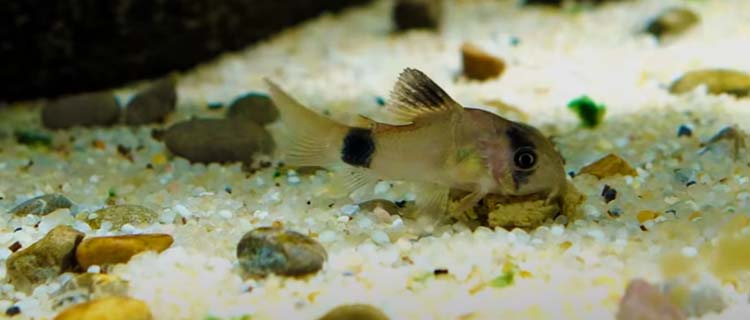
Features of the Panda Cory Catfish The name “Panda Cory” was inspired by the black spots located on various parts of its body, resembling the black patches on pandas. This species stands out from traditional cory catfish due to its body’s color transition from white-pink, prominently displaying three black spot-like patches.
Like other members of its family, pandas have bony structures named “scutes” in place of scales. Panda corys have a total of six whiskers, with three pairs on each side. They also possess spines at various points on their body, which can be used defensively.
In adult sizes, they are observed to grow up to 5 cm. Moreover, reaching this size in an aquarium environment takes quite some time.
Fish Species That Can Live With Panda Cory
Panda cory catfish are peaceful, calm fish that thoroughly enjoy living with members of their species. They can be kept in aquariums in groups of 6 or more. However, if there isn’t sufficient space, a group of 4 panda catfish can also be kept.
Panda corys are compatible with almost all types of aquarium fish. However, they should not be kept with predatory and aggressive species like larger cichlids. Being highly social, panda catfish get along best with other bottom dwellers after their own kind (like dwarf loaches).
Small to medium-sized tetras and rasboras can be good tank mates for panda corys.
In addition to these, some other creatures you can choose include:
- Neon Tetra
- Rasbora
- Swordtail
- Nerite Snail
- Otocat fish (Otocinclus affinis) and other small loach species
- Molly fish
- Cherry Barb
- Guppy fish
- Angelfish
- Platy fish
- Zebra Danio
- Cherry and Amano Shrimp
- Kuhli Loach
- Discus
- Betta fish
Aquarium and Water Parameters
Like other corydoras, panda cory catfish prefer living in good water quality. To stay healthy, they require an aquarium that can be well-filtered. Furthermore, performing weekly water changes without delay affects their quality and length of life
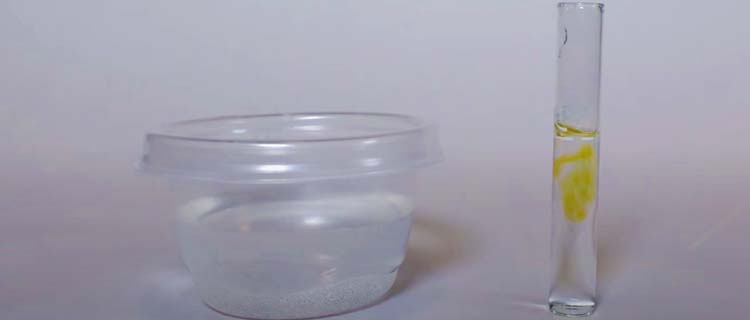
The aquarium volume should be at least 50 liters and they should be kept in groups of at least 6. If there are other fish in the aquarium, this number can be reduced to 4 to avoid overcrowding. Fine sand or gravel can be used as the base material.
They appreciate live plants, but it’s not a necessity. If you can provide enough hiding spaces, there’s no need for plants. Especially rocks and cave structures are favored habitats for cory catfish. To provide shade, you can add some floating live or harmless artificial plants.
Although panda catfish can tolerate warmer waters, they are suited to live in temperatures between 20 and 25 degrees Celsius. Waters ranging from very soft to moderately hard are suitable. The pH value can be between 6 and 8.
Feeding and Foods
As their name suggests, cory catfish consume all types of food and remnants that fall to the bottom. However, when feeding, you should ensure that the food reaches the bottom of the aquarium. If other fish in the aquarium consume all the food at the surface, it can leave the cory catfish hungry.
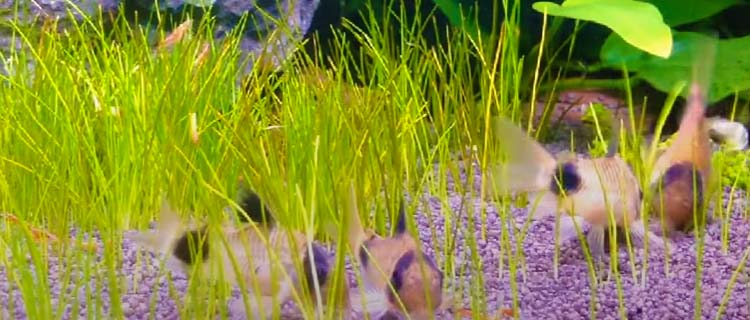
If you want to provide the best care, you should definitely add live food or frozen meaty foods (like chicken liver, etc.) to their diet. Bloodworms, worms, shrimp, and larvae are also among their preferred foods. Additionally, you can ensure they remain extremely healthy by using bottom-feeder tablets suitable for panda cory catfish.
These fish are much more active at night. Therefore, for healthy feeding, you can drop a tablet food into the aquarium at night.
Bonus Information: The price for panda cory catfish is in the mid-range. In aquarium fish stores, the per-item price is around 20 Lira on average. Being a species that should be kept in groups, you should acquire at least 6 of them, or a minimum of 4 if you are going to create a crowd.
Sexual Dimorphism and Breeding of Panda Cory Catfish
Female panda corys are bulkier compared to the males. Especially when viewed from above, their abdominal area appears much wider. Male panda corys are more stout and shorter in size compared to females. Also, when resting at the bottom of the aquarium, the heads of the females appear raised.
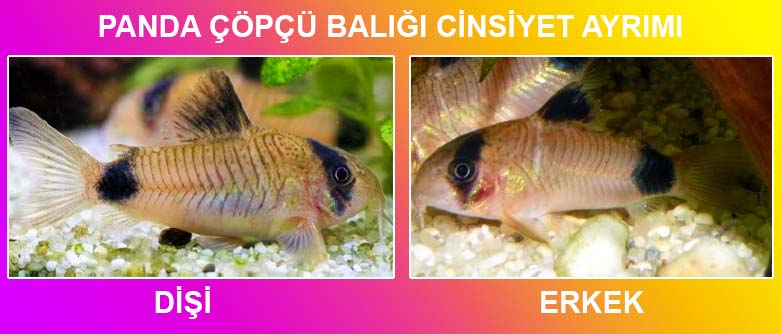
In the beginning, they were viewed as a species that’s difficult to breed in aquariums. However, over time, the panda cory catfish proved not to be a challenging fish when it comes to reproduction. Being egg-layers, they prefer to lay their eggs on flat surfaces or on fine-leaved moss species like java fern.
For efficient breeding of panda corys, it is beneficial for the fish to feed on live, nutritious foods like bloodworms, daphnia, or brine shrimp, as this increases fertility and encourages spawning. Additionally, to stimulate mating, the water temperature can be slightly lowered.
Cory catfish become ready to breed during the rainy season. Spawning can be triggered by decreasing the water temperature. When the female is ready, she will accept the male’s courtship and they will mate, taking on a “T” shaped posture.
Once ready, the female will adhere the fertilized eggs either on plants or a flat surface. She lays 1-2 eggs at a time, and this process continues for several hours until about 100 eggs are laid.
The eggs hatch after 4 days. At this point, water parameters should be stable because the eggs are very sensitive to water changes, especially in temperature. During this period, the water temperature should not exceed 23°C (73.4°F).
When changing the water, it’s essential to add water with similar parameters. The fry become resilient after about 3 months, after which they acquire their expected color and pattern.



